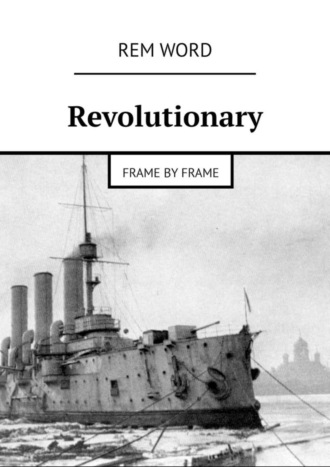
Полная версия
Revolutionary. Frame by frame
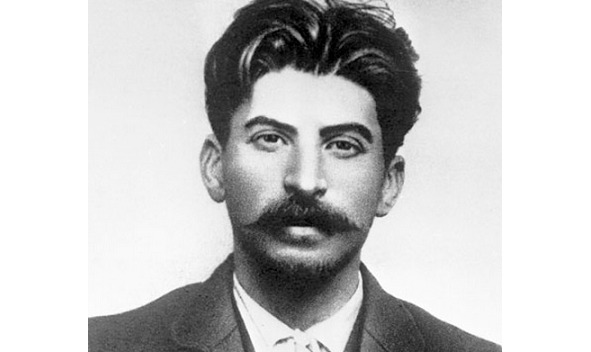
Upon exclusion from the seminary, I. Dzhugashvili receives a certificate that he has completed four classes and can work as a teacher in elementary public schools. For some time, Joseph has been working as a tutor, and even an “observer-calculator” at the Tiflis Physical Observatory. Actually, this is the entire experience of practical, generally useful work of the future leader. Even at the seminary, Dzhugashvili led the propaganda of Marxism in the workers’ circles, from a certain moment he began to receive money for it. Since 1901, now Koba (nickname – after the name of a romantic Georgian robber) goes to the illegal position. The first undertakings of the revolutionary – the publication of the newspaper “Struggle” and the organization of a large-scale strike of oil workers in Baku (1904), can be considered productive. Since 1903, the time of the Second Congress of the RSDLP, Stalin is a recognized revolutionary, now a “Bolshevik”, and spends most of his time abroad. Foreign voyages alternate with links – by the standards of the Stalinist GULAG “childish,” a few months a year, with the ability to run whenever they like. In 1906, Dzhugashvili was apprehended by a tragedy – the death of his wife, Catherine (Svanidze), from typhus, 8 months after the marriage. The personality of a revolutionary undergoes irreversible changes to excessive rigidity and asceticism. The son, Jacob, later nicknamed Stalin’s “Teen Wolf”, was raised by his mother’s sister until 1921. In March 1917, under a general amnesty from the organizers of the February Revolution, Stalin arrives in St. Petersburg
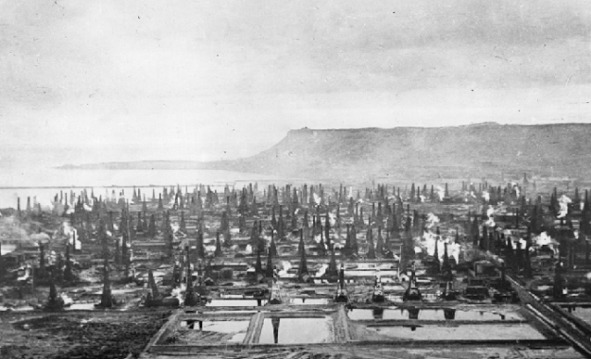
At the beginning of the twentieth-century turbulent exhaust gas, 95% of Russian and more than 50% of global oil production falls on Baku. The tycoons registered in Russia – Nobili, Rothschilds, Mantashevs (Russians of Armenian descent), make huge profits. Sometimes they donate to theaters and museums, but the “simple man” is outside the scope of their understanding. Meanwhile, the salary of a worker does not reach the ruble a day, he has to work and live in terrible conditions. The photograph depicts something resembling the landscape of Mordor – a forest of oil rigs and swamps of earthen tanks filled with oil. The wells are poisoned. For drinking you have to collect rainwater. Unpaid overtime work, 12—15 hour working day, endless fines, dwelling-barracks with rooms for 80 people. Such a tremendously low level of life, on the one hand, devalues life, on the other hand, makes possible the solidarity of representatives of thirty nationalities, ensures readiness for struggle. … Cossacks called by the authorities dispersed a 40,000-strong mob, killed 8 and wounded 40 workers. Workers, in turn, are detrimental to businesses. In the end, the first collective agreement is drawn up in Russia. A 9-hour working day is established, wages are raised to one ruble. Such a thing as a four-day paid vacation is realized as something fantastic before. The tsar’s reaction is interesting, according to one of the government documents: “… the pliability shown by the oil owners… drew the attention of his imperial majesty the sovereign emperor, since this compliance may have extremely adverse consequences on other factory and factory districts”
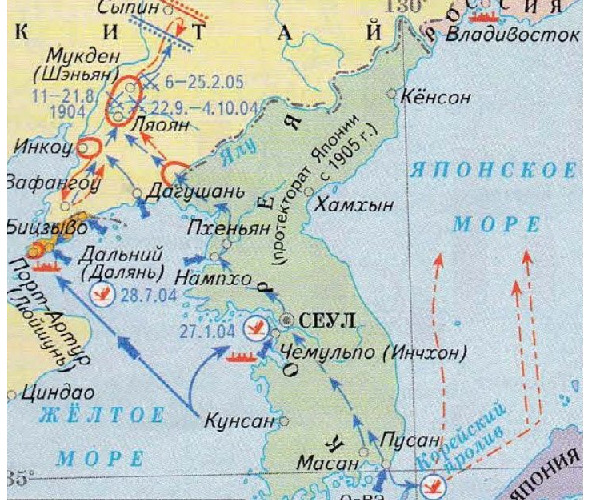
N-Japanese war of 1904—1905 becomes the catalyst for many subsequent revolutionary events. The initial psychological reason for the confrontation with the ambitious Eastern Power is as follows. During a trip to Japan, Nicholas II receives saber blows from a samurai, who believes that excessive honor is given to a foreign emperor. The attacker dies three months after the sentence is pronounced (life imprisonment), but the monarch harbors a fierce grudge against all Japanese. The external reason is the unrestrained advance of the Russian troops in Korea, the construction of military fortifications, contrary to the treaties with Japan. In addition, the intention of the samurai to saddle the 450 millionth China and lay the foundation of the world superpower with unclear objectives, causes the desire to somehow stop them. Before that, in the First Japanese-Chinese War, as well, for control over Korea, the Japanese gain experience in waging war at sea with armored ships. In the autumn of 1894, a battle will take place at the mouth of the Yalu River (north-west coast of Korea), with approximately equal forces (12 and 18 pennants, respectively). Japan has 4 ships seriously damaged, 100 people killed. China loses 5 sunk cruisers, and 650 sailors. The Qing Empire wins the battle – drives the Japanese squadron away from the transport ships. However, fearing new demoralizing losses, the government of the Celestial Empire forbids the fleet to go to sea. In early 1895, the battle for Weihaiwei (now the administrative district of the PRC) will take place. The Japanese attack the surrounded Chinese fleet (27 pennants, two battleships of Italian construction), destroy it completely, together with 2000 sailors, losing 200 fighters and 2 destroyers. A serious shortcoming of the Chinese fleets is the lack of high-explosive fragmentation projectiles. Available armor-piercing pigs inflict minimal damage to the enemy. Russian officers do not bother themselves with a detailed analysis of instructive battles of the “Asian powers”. The photo shows a map of the alignment of forces and major battles of the Russo-Japanese War

Port Arthur is an important Russian naval base in China. Photograph of 1904. During the First Japanese-Chinese War of 1894, the city was captured, and Japanese troops showed incredible cruelty to civilians. A year later, at the request of the Russian empire patronizing China, Japan returns the territories. But, from this time on, the Japanese harbor anger toward Russia. The militarization of the Land of the Rising Sun is gaining an incredible scale. It should also be noted that in 1867 Japan successfully carried out the Meiji restoration (the westernization of society). If at one time American Indians would have done social and technical changes according to the progressive European model, then the presidents, or indeed, the leaders of North America, would now be Vinita and Chinganchguky. Unlike the Iroquois and Sioux, samurai find the strength to change in order to remain themselves. In 1897, by the sole decision of Nicholas the Second, contrary to the resolution originally agreed upon with Witte (to leave friendly China alone), a Russian squadron was advanced to Port Arthur. The ruling dynasty is unable to resist the invasion. The self-rule of the king does not benefit the relations of the two great powers. Since 1901, Russia has received a completely rebuilt military base on the part of the planet where serious passions are boiling, and where the interests of the Russian people themselves are viewed the least
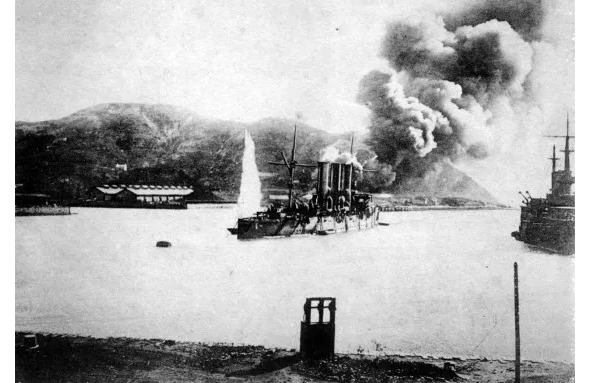
On the night of February 9, 1904, without waiting for the government of Nicholas II to clarify the reasons for the deployment of Russian garrisons in Korea under the guise of foresters, despite the agreement, and not listening to the assurances in the style of “They-there-no,” Japan begins the war. Two days later, diplomats from the Land of the Rising Sun officially report on the state of affairs. Photography – shelling of the Russian fleet in Port Arthur, from the dominant heights. I must say that four out of every five 11-inch Japanese shells do not explode. This and other factors allow the Port Arthur garrison to last 320 days. The irretrievable loss of Russia – 10 thousand people, 23 thousand prisoners, Japan – 35 thousand dead
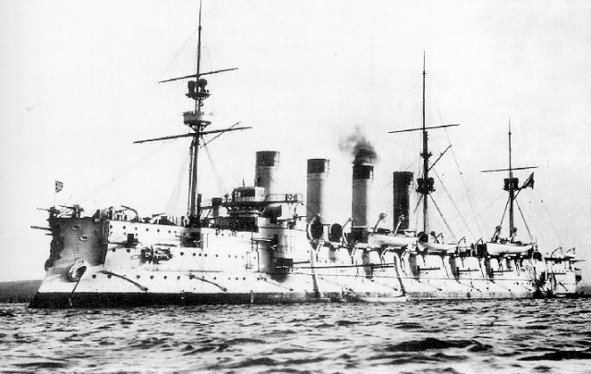
The armored cruiser “Thunderbolt” (“Gromoboy”), one of the best ships of the First Russian Squadron (and with a relatively happy fate). To enjoy your gaze. The manufacturer – the Baltic factory, St. Petersburg. It is quite characteristic of its time the ship was launched in 1899, put into operation a year later. The displacement is 12,500 tons, the length is 147 meters, the width is 21 meters, the total power of the machines is 15,500 hp, the travel speed is 36 km. hours, autonomous navigation distance of 15 000 km. The main armament is four 203 mm., Sixteen 152 mm., Twenty four 75 mm. guns, four torpedo tubes. Crew 872 people. During the battle in the Korean Strait, the cruiser loses 91 sailors killed, but remains on the move and, after repair, becomes operational. In 1922, “Thundercaster” was dismantled for metal. In the First Worldwide Ships with Mixed Weapons, Dreadnoughts are pressed, they are also battleships with a displacement of 17,000 tons, the main trump card of which are large-caliber guns (305 mm and above). Russia manages to produce several battleships for the Great War
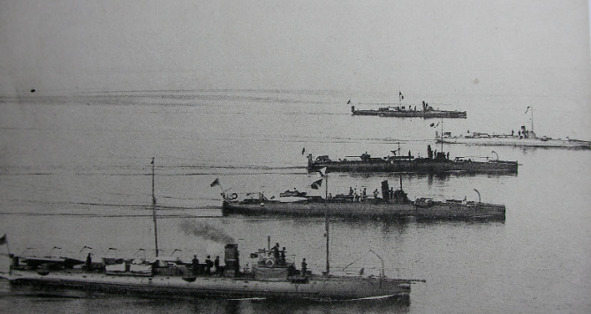
Japanese torpedo boats. It is these small ships that, for reasons that are not completely understood, lead a mystical horror to Admiral Rozhdestvensky. During a hike to Vladivostok, off the coast of Great Britain (Dogger Bank district in the North Sea), at night, the commander orders open fire on English trawlers, who traditionally conduct fishery here and how much they look like Japanese destroyers. This incident costs Russia a loss of face, almost war with the queen of the seas, a lot of money, as well as the delay in following the squadron. Some researchers consider the incident a very skillful provocation. Britain refuses to let Russian ships through the Suez Canal, because of which the path becomes several thousand kilometers longer. The fleet does not have time to help the besieged Port Arthur. After receiving the news of the surrender of the garrison, he is sent to break through to Vladivostok
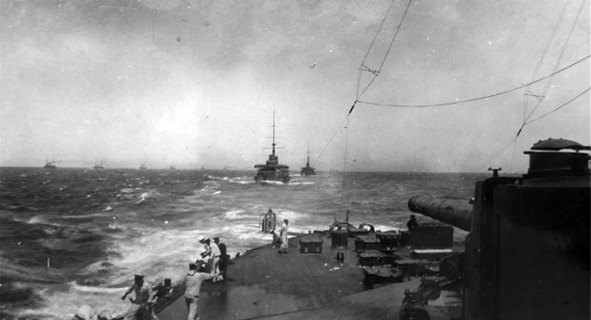
In May 1905, the famous Tsushima battle will take place. About 85 ships of the Japanese fleet are attacking the following 38 pennants of the 2nd Pacific squadron of Admiral Rozhdestvensky following Vladivostok. The Mikasa flagship gets 40 hits of large-caliber (305 mm.) Russian shells, but thanks to their stiff fuses and the excessively “safe for travel in the tropics” moisture of pyroxylin, it does not have any serious damage. Formed in the armor holes, the Japanese plug in traffic jams. The ships of the Pacific squadron, after several discouraging clashes, one by one break through to their destination, fight, are thrown on a sandbank, or surrender. Only three of them come to Vladivostok. Admiral Z. Rozhdestvensky, the carrier and distributor of sacrificially suicidal feelings throughout the Russian fleet, climbs aboard the Mikas… Japan loses two or three destroyers in this battle. In the photo – Japanese ships during the battle of Tsushima. Tsushima is a small island in the Korean Strait, and its name translates as “Donkey Ears.” In total, about one hundred main and auxiliary ships take part in the battles of the Russo-Japanese war from each side. The loss of the Russian fleet 64 pennants, the Japanese squadron 24. Most of the latter destroyed by mines. After exhaustion of forces (the Japanese foreign debt increases fourfold, the Russian one third) and the huge losses – the Japanese army – 80,000 killed, the Russian army 60,000, September 5, 1905, both sides, with the mediation of Theodore Roosevelt, make peace. The militarists receive half of Sakhalin, Korea and the territories of modern China.
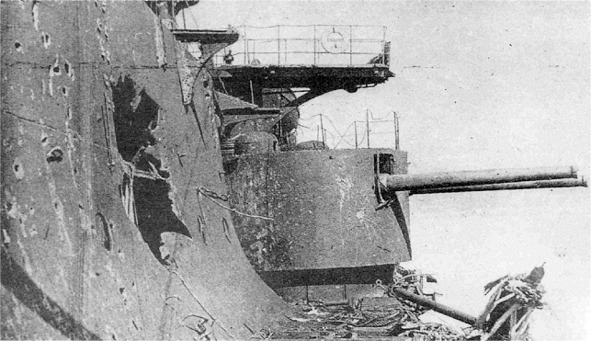
The reasons for Russia’s defeat are the uncertainty of the goal of the war for the people, and so possessing significant undeveloped territories. The lack of initiative of Russian naval commanders. The maneuvers, the real combat training, are usually considered by them as an “game of war” unworthy of a respectable officer. The main thing – to keep the gloss and without unnecessary trouble to live to retirement. The transfer to the reserve of gunners who had learned to shoot accurately for 7 years – leaving them on long service would have meant an increase in salary. The Japanese artillerymen, while training, shoot two barrels of guns at full wear and remain in service, as the main value of the fleet. The content of explosive in Japanese projectiles, shimozy, is three times the mass of pyroxylin in Russian projectiles (48 kg. Vs. 15 kg. Of the main caliber). They deploy armor not with their kinetic energy, but, above all, with a powerful explosion. Russian shells are set to explode only after penetrating thick armor, very often they do not work when they hit a weakly armored hull or water. Correction of fire in this regard is extremely difficult (the effectiveness of the shooting is not assessed by the command in advance). The photo shows a hole from the explosion of a Japanese shell in the hull of a Russian ship. In addition, thick smoke shimozy closes optical devices sights and makes it impossible to efficient firing
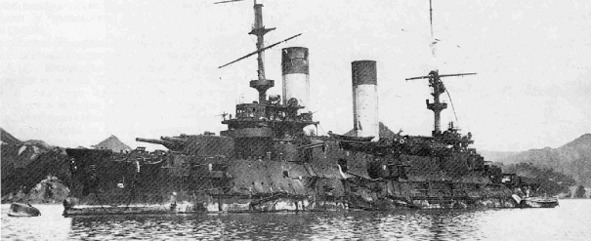
The squadron battleship “Eagle” after the Tsushima battle in the Japanese port of Madzuru, 1905. According to averaged data, the ship receives two and a half times less hits than the “Mikasa”. However, these shells explode. Russia loses the war. As some consolation, it can be recalled that in 1915, Germany surrendered the strategic naval base of Qingdao to the Japanese. After another quarter of a century, Japan gets involved in a fight with Britain, the United States, New Zealand, China, and right up to the Battle of Midway Atoll in June 1942, confidently defeats them. To finally pacify the samurai, tank armads of the USSR in the Celestial Empire, landings on the Kuril Islands, and nuclear bombardments from the United States will be needed. Even more effective than bombs is domestic and foreign policy. In November 1941, the American government put forward an ultimatum: to clear China and a number of islands in the Pacific Ocean from the Japanese presence. The whole world knows about the terrible massacre in the city of Nanjing (1937), when within a month the samurai kill at least 250 thousand civilians. The list of war crimes is constantly growing. To save people, even distant and unfamiliar, from a horrible death is a weighty, but not the only reason to participate in the war. The second argument is the welfare of US citizens. The Yankees are confident that the government will take care to use the fruits of victory for their full prosperity. Indeed, with the end of the war, the dollar becomes the leading currency, and the Americans, for the most part, are the wealthiest people on the planet. Russian soldiers realize that in the event of triumph over Japan, they and the descendants would receive only a burden – feeding the eastern protectorate. The third success factor for the United States is a democratically organized society. To some extent, an effective feedback system works in the States Army. If the American commanders understood that something was wrong with their shells, undoubtedly, they would have found a way to bring this fact to the attention of the leadership.
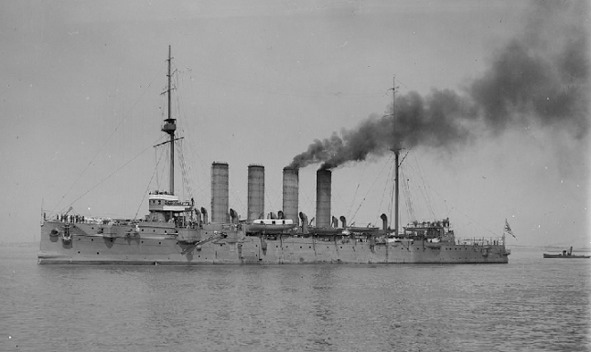
The cruiser “Varyag” after the battle on the roads of the Korean port of Chemulpo becomes the hero of famous songs based on poems by the Austrian poet Rudolf Greinz. After the war, the Japanese climbed the ship from the seabed and assigned it the name “Soy.” Later, Russia buys Varyag. In 1917 he was under repair in the British port. In 1925 in Ireland, the sea, the ship breaks down from the towing cables and disappears in the depths. In the photo – “Varyag” as “Soya”
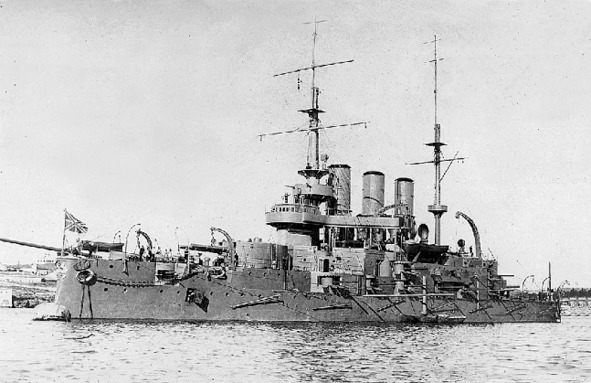
The battleship Potemkin-Tavrichesky, photo 1904. The ship was built in 1898 on the stocks of the Nikolaev Admiralty (Russian Empire). Displacement 13,500 tons. As it is known, on July 8, 1905, a conflict of officers, who by all means save their food for subordinates and ordinary sailors, leads to the armed seizure of an ironclad. For some time the ship rushed along the northern coast of the Black Sea, gathering around itself even a small squadron at the height of its glory. Over time, the enthusiasm of the sailors decreases, the team surrenders to the Romanian authorities. Greed and very low emotional intelligence of naval commanders, among other things, lead to a huge damage to Russia’s reputation on the world stage. For lovers of a happy ending there is a wonderful plot. One of the sailors of the battleship Potemkin, young Ivan Beshov, conjured over documents, moves from Romania to Ireland. Here he founds a network of popular (to date) “Fish & Chips” eateries, later “Beshoffs” and lives 104 years, until 1987

Virtually the only conductor of the First Russian Revolution (1905) is George Apollonovich Gapon (Agathon), a native of the Poltava province, a priest who decides to establish heaven on Earth by quite earthly means. In his youth, George tries to establish a church order dedicated to serving the people, but he does not receive blessings from the hierarchs. In cooperation with both the authorities and the parties of the Socialist Revolutionaries and the Bolsheviks, the revolutionary priest is taken to create a prototype of the trade unions. During the events of Bloody Sunday, Agafon is going to hand the petition directly to Nicholas the Second, so that it “would not be put on the shelf.” The main idea is the convocation of the national representation, a kind of Constituent Assembly, deciding questions of state life together with the king. Protesters, at the request of Gapon, do not even carry penknives with them. Soldiers meet the torrent of people with rifle fire. Passionate priest is wounded in the arm. In order to avoid arrest, Georgy Apollonovich emigrates to England, where he publishes the “Story of My Life”, dreams of overthrowing the existing system, purchasing transport with weapons for Petersburg workers. In the same place, Agafon meets with the leaders of the revolutionary movement, including Lenin, with whom he conducts detailed discussions. Over time, Gapon cools down somewhat and begins to reflect on the peaceful resolution of the conflict between the people and the authorities, develops the idea of cooperatives as an alternative to trade unions and the entire bureaucracy.
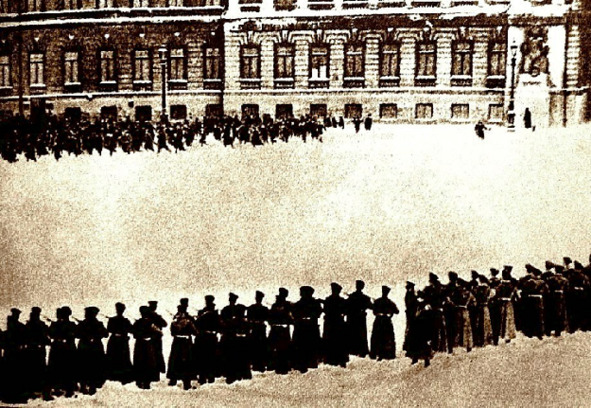
“Bloody Sunday”, January 21, 1905. The Tsar leaves St. Petersburg without bothering to appoint a representative to receive the petition. Just a day later, he was from Nicholas the Second to become Nicholas the Bloody – and even does not seem to understand what had happened. It is known that without loud protests and self-sacrifice nothing in this world changes. Doors open knocking. Prior to that, the Russian State Church has for centuries called the people to silent humility before earthly princes. Century after century flow in mental and physical slavery. Maybe this is the situation people take for the test of their long-suffering, which is necessary for entering Paradise?
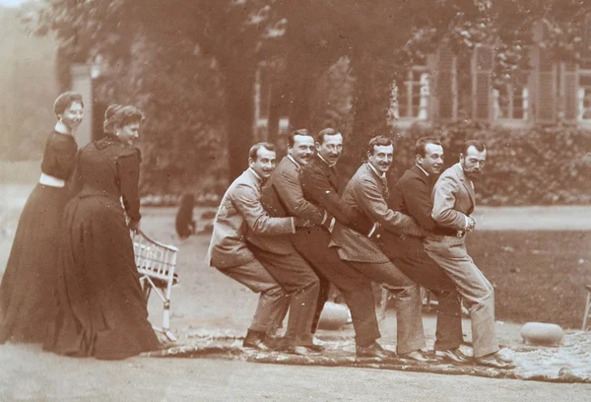
Nicholas II on vacation, first, or already the last in a series of persons of blue blood. Actually, leisure, entertainment, beloved family or a mistress-ballerina occupy the first place in the list of affairs of the monarch. While the Russian society with shudder meets the news of the fall of Port Arthur, the king remembers scenes from past hunts, jokes and laughs. Characteristic entry in the diary, May 8, 1905. “Sunday. The day stood cold and gray. At 11 o’clock we went to dinner and had breakfast with everyone. Received a maritime report. Walked with Dmitry for the last time. Killed a cat. After tea, he received Prince Khilkov, who had just returned from a trip to the Far East. After lunch, we parted with Ella and the children and escorted them to the station. Returning home, engaged. “By the way, local peasants supply stray cats and dogs for royal hunting in the vicinity of the palace, by thousands. A day after the events of Bloody Sunday, Nikolai makes a short entry in his diary “Oh, how terrible and painful it is” – and goes on to describe the tea ceremony. By January 19, the confidants still persuade the emperor to talk to the common people. Reception of the delegation of 34 people held in Tsarskoye Selo. On the question of raising wages, the monarch replies that the workers themselves should negotiate with the industrialists. On the request for the reduction of the working day, he reports that he works a lot, and if the workers shorten the working day, they will start to engage in politics, and the king does not want to tolerate it. The task of the workers is to work, not to think about themselves. The king is aware of the needs of the workers, but must be tolerated. And, yes, literally: “I believe in the honest feelings of the working people and in their unshakable devotion to Me, and therefore forgive them their guilt …". The next day, Russian newspapers describe the reception of the king by the delegates. The workers are happy with the meeting and are completely happy.

The priest receives support from the Chairman of the Council of Ministers S. Witte and his subordinate, police officer S. Zubatov. For the creation and arrangement of legal workers’ organizations, the first Russian trade unions, large sums are allocated from the treasury. Agathon makes an appeal “To stop on the achieved”, and to build the future nevertheless, in cooperation with the state. The idea of interaction with the government, in the conditions of the fact that the Duma already exists and the parties legalized, George proposes to his acquaintances, militants – the Social Revolutionaries. This, quite a reasonable sentence “friends” perceive as an act of recruitment. In addition, the priest demands an open trial of himself. Here, perhaps, the financial frauds of one of the leaders of the Social Revolutionaries, and the real agent of the Security Department, Yevno Azef, would be revealed. The Black Azef gives the order to the Social Revolutionary Pinkhas Rutenberg to kill G. Agathon. This is happening, clumsily and cruelly, on the outskirts of St. Petersburg, on March 28, 1906. After the October Revolution, Rutenberg himself, fearing the flywheel of terror, which he himself made efforts to unwind, emigrated to Europe and Palestine, where he became one of the leaders of Jewish self-defense “Hagan”. In the photo – Sergei Zubatov, a revolutionary monarchist, the founder of the trade union movement in Russia. At the peak of his career, Sergei Vasilyevich loses mutual understanding with the leadership. In 1917, a retired officer is not able to survive the abdication of Nicholas
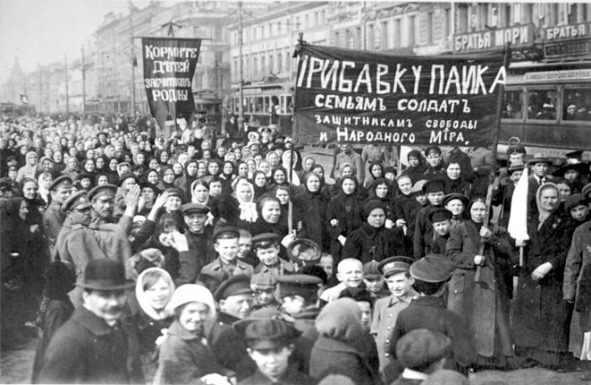
Rally in St. Petersburg, 1905 In the midst of the people high school students are visible (a characteristic semi-military form). The number of primary and secondary schools has increased from 1894 from 70 thousand to 105 thousand in 1915. To a large extent this is a merit of the First Russian Revolution. Less than a year after Bloody Sunday, October 30, there is a legislative assembly that guarantees the rights of citizens – the State Duma. The completely edible fruits of G. Agafon’s movement are as follows: 1) The formation of political parties, the creation of the State Duma, 2) The working day is limited at state-owned enterprises to 9.9 hours (about 42 minutes), 3) Reduction of the rent for land. The peasants are finally exempt from the payments for the purchase of land plots from landowners since 1861, 4) At least without enthusiasm, Nicholas II signs a document on freedom of assembly, speech and conscience, 5) The creation of cooperatives, trade unions, insurance companies protecting rights workers, 6) Peasants are exempted from corporal punishment, 7) The policy of Russification of the population is softened. According to S. Witte’s considerations, the state should cease to patronize the church dominant in Russia in order to push the latter to at least some kind of reforms. For ostentatious magnificence and ritual hiding the reluctance to communicate with people. The ROC refuses tedious spiritual leadership. The second consideration looks like real separatism. Russia should reject Asian and other foreign provinces in order to “even out the national composition” and thereby avoid many shocks.



